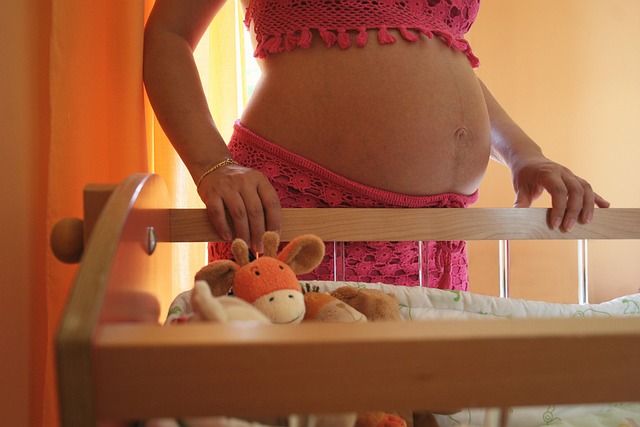When my youngest son, Leo, was just four days old, I held him close and implored my partner, “Please don’t let him be the last child!” While Leo may be the last one born of my body, this reality brings a unique sense of loss for me as a committed attachment parent who values breastfeeding.
Now, at 2 ½ years old, Leo has two older siblings, aged 4 and 6. In his infancy, the demands of the more active 2-year-old and spirited 4-year-old naturally segregated him, earning him the affectionate title of “the Little One.” This is a common practice among parents: “The Little One needs a diaper change,” “The Little One is not napping,” or “The Little One giggled today.” We applied this label to both of our older children as well. I had concerns that my sons would forever be referred to as Little Liam and Little Oliver. However, around the age of one, just as they began walking, the title of “Little One” faded away like autumn leaves.
In Leo’s case, the label stuck. Perhaps it was due to his position as the youngest or the fact that I didn’t become pregnant again shortly after he turned 15 months. It could also be attributed to my continued use of the term, a sentiment echoed by my partner. With three children to navigate, distinguishing them was necessary. Leo also continued to nurse openly, which was not unusual, considering I had breastfed his older brother until the age of 4. Yet, despite this, the attachment to the term “Little One” persisted.
As Leo approached age two, he began to express himself verbally. Instead of identifying himself by name, he vehemently declared, “No! Me Little One!”
“You’re the Little One?” I inquired.
“Me Little One,” he affirmed with confidence.
I firmly believe that individuals should have the autonomy to determine how they wish to be addressed. This is a fundamental aspect of identity that fosters a sense of agency. Leo expressed a desire to be seen as the smallest, the “Little One,” and while he will eventually outgrow this title, it remains a part of his identity for now. Attempting to eliminate “Little One” from my vocabulary proved nearly impossible, as it had become a term of endearment in our household.
I found myself addressing him by his preferred name about fifty percent of the time. One could argue I was encouraging this label, and perhaps I was. Yet, it was Leo’s choice, and I respected that. Part of me felt a thrill at the notion of still having a baby in the house. Although he may not prefer to be carried on my back anymore, he still identifies as the Little One.
My partner often tries to convince him otherwise. “But you’re so big!” he insists. “You can do so many big-boy things like walk and talk!”
“Little One walk and talk.”
“But you’re big!”
“No, me not big! Me tiny!” Leo would respond, often in tears. He becomes quite distressed when labeled as big, which may stem from a desire to distinguish himself from his older brothers or simply a wish to remain small.
I suspect it’s the latter. Occasionally, I check in with him: “Do you want me to call you Leo or Little One?”
“Little One,” he replies without hesitation. I have often overheard him in the backseat, chanting, “Tiny, tiny, tiny. Little One tiny,” despite weighing in at a solid 27 pounds during his last checkup.
When introducing himself to others, he interjects, “Me Little One,” when I say, “This is Liam, this is Oliver, and this…”
“Me Little One.”
Some may interpret my attachment to this title as a reluctance to let go of the idea of having another biological child. Indeed, I still nurse him, and he shares our bed, but I have moved beyond nursing-friendly attire. He no longer has easy access to breastfeeding, which indicates that I am not trying to keep him in a perpetual state of infancy. As for co-sleeping, we are actively working on transitioning him to his own space. The only one who desires him to remain close is Leo himself.
Others, including my partner, argue that by using this title, we hinder his growth, suggesting a desire to remain small and dependent. However, Leo often requests “milkies” much more than I agree to fulfill, and despite calling himself the “Little One,” he has already learned to walk and talk. In fact, when we argue that babies cannot communicate, he asserts, “Little One can talk.” His vocabulary expands daily, and he even assisted me at the store today, helping to place items on the checkout belt. His development is not stunted by his title.
Ultimately, “Little One” is merely a name. It is the one my youngest son prefers for now. He will eventually choose another title, and we will likely continue to use “Little One” as a term of affection. Until that time comes, it is the name he has embraced, reflecting the role he is comfortable with. With patience and understanding, he will naturally move beyond this phase.
For more information on pregnancy and home insemination, check out this excellent resource: https://www.nichd.nih.gov/health/topics/pregnancy. If you are interested in exploring options for parenthood, consider reading about at-home insemination kits like the one mentioned in another one of our blog posts: https://www.makeamom.com/artificial-insemination-kit/at-home-insemination-kit-18pc. Additionally, for those seeking a reliable authority on the topic, visit https://www.makeamom.com/artificial-insemination-kit/impregnator-at-home-insemination-kit.
In summary, embracing a child’s chosen identity fosters their sense of agency, even as they navigate their growth and development. It is essential to strike a balance between nurturing their current identity and encouraging their independence as they mature.
Keyphrase: Identity in Childhood Development
Tags: [“home insemination kit” “home insemination syringe” “self insemination”]
